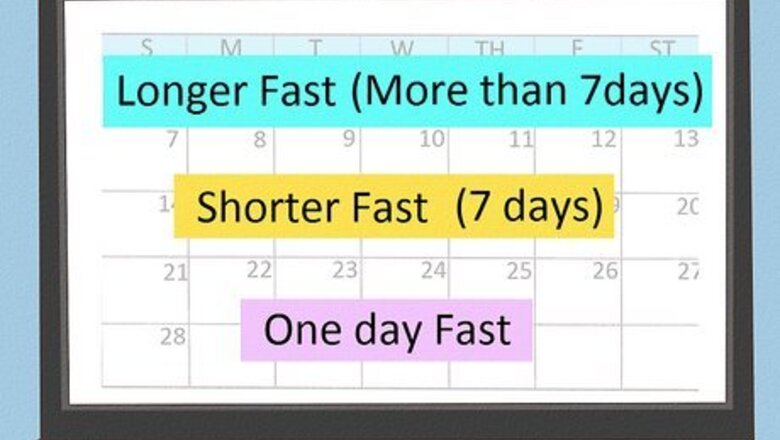
views
Breaking the Fast (Day One)
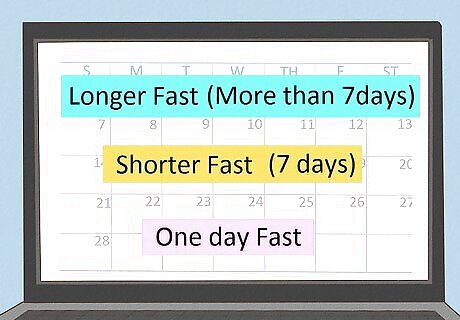
Set a timeline depending on how long you've been fasting. You want to make sure you know what the time frame is for breaking of the fast. Most often, the length of the fast will determine the length of the time spent breaking the fast. Don't skip the initial breaking of the fast unless you want to feel sick and completely undo all your hard work. For longer fasts (more than 7 days) you will want to set aside four days for the breaking of your fast. The first couple days will be limited to the very basics before you start to add more things. Set aside one to three days for breaking the fast if you're doing a shorter fast (about a week). The first day will be the day for just fruit juice and maybe some broth. Depending on how you feel, you can move through the steps quickly over the next 2 days. For a one-day fast, set aside one to two days to recover from it. Your system won't be as stressed, but that doesn't mean you can just jump in and start eating junk.

Make a meal plan. One way to make it easier to keep on schedule and not start eating things you shouldn't is to make a specific meal plan for the length of time you need to introduce food back into your system. An example of a meal plan (for breaking a four-day fast) might be: Day One: Two 8-ounce cups of fruit/veggie (carrot, some greens, banana, apple) juice that is diluted 50/50 with water 4 hours apart. Day Two: More diluted veggie/fruit juice, with bone broth and 1/2 cup of fruit (pears, and watermelon) every 2 hours). Day Three: A cup of yogurt and fruit juice for breakfast, a snack of 1/2 cup of watermelon and veggie juice, a lunch of vegetable soup and fruit juice, a snack of 1/2 cup of apple, dinner greens with yogurt as dressing and fruit juice. Day Four: A soft-boiled egg for breakfast with fruit juice, yogurt and berries as a snack, some cooked beans and veggies for lunch, an apple and some nuts as a snack, a hardy veggie soup for dinner with fruit juice.
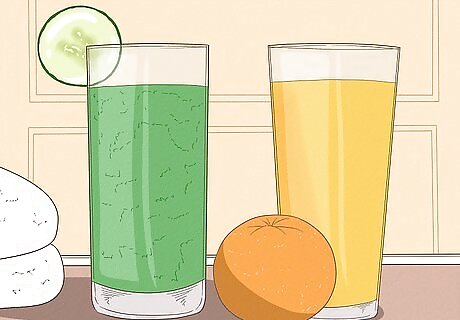
On Day One, focus predominantly on drinking fruit or vegetable juice. For the initial break, especially if you've been fasting for awhile, you'll need to start with re-hydrating your body. To this end, the first day, or two, you'll need to only drink diluted fruit/veggie juice. To break the fast, drink one 8-ounce cup of diluted fruit or veggie juice. Avoid the kind that has extra sugars and additives. After all, you just got that stuff out of your system. In 4 hours, drink another 8-ounce cup of diluted fruit or veggie juice.
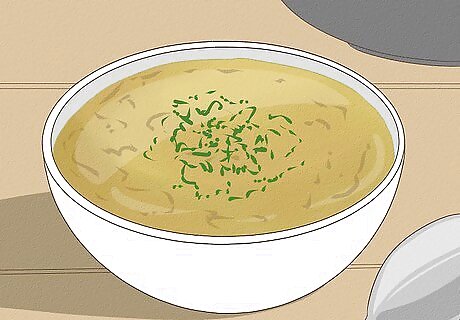
Supplement your fruit/vegetable juice with vegetable or bone broths. Depending on how your body feels, in another 4 hours, you can start adding some vegetable or bone broth to your regimen. Try this recipe for chicken stock or beef broth if you're adventurous and can help yourself from nibbling on meat while you're making it. You give your body adequate time in between foods because you don't want to overload your system. It will have difficulty processing and digesting new food, even broths, if you put a bunch of food in it right away.
Breaking the Fast (Day Two)
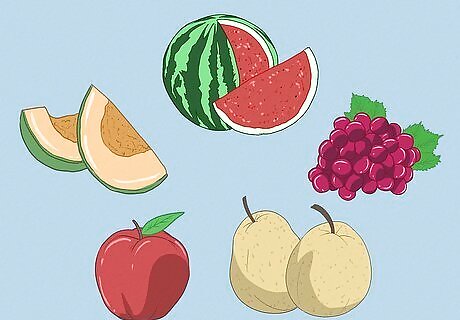
Start introducing raw fruit into your diet, especially if your fast was on the shorter side. If you fasted for a couple weeks or longer, it's probably a good bet to continue a steady diet of fruit/veggie juice and stocks or both. Otherwise, it's time to move onto whole fruit. That's because a lot of fruits have a high water content and are easily digested, while also being high in nutrients and energy. Your system needs food that is easily assimilated and gets your digestive system going without making it have to work too hard. You will want to start introducing small quantities of fruit around the end of the first day and second day. Some of the best fruits to eat are: melons (especially watermelon), grapes, apples and pears. These are easy on the system.
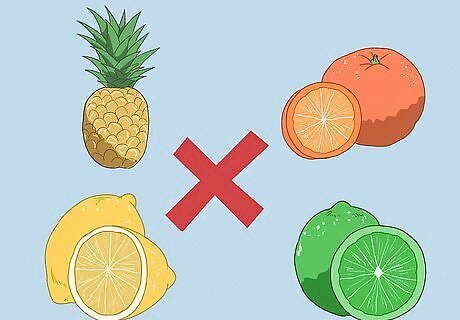
During this time, avoid citrus fruits like lemons or oranges and fibrous fruits like pineapples. The fibrous fruits are harder for your body to digest and the highly acidic fruits may cause discomfort.

Add in yogurt. You really want to be eating yogurt during the breaking of the fast. Yogurt will help repopulate your digestive tract with good bacteria and enzymes that the fast has stripped from it. These probiotics will, in turn, make it easier for you to digest food. Introduce this one on the second day, or whenever you introduce the fruit. You want those enzymes in your digestive system as soon as possible, without overloading the system. Make sure that you are using unsweetened yogurt, because sugar (processed sugar, not the kind that's in fruit) will make you feel worse.
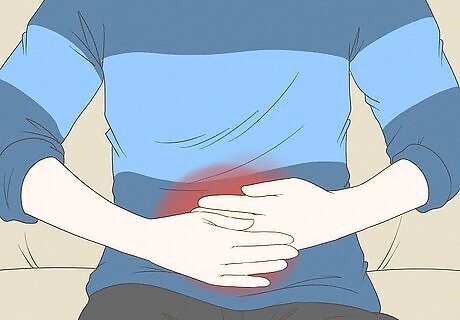
Pay attention to your body during this time. Your body is going to tell you if you're moving too quickly. Some things are normal, like feeling incredibly hungry or lightheaded because you haven't eaten in a while. There are other things that mean you're breaking your fast incorrectly. If you get constipated, your stomach is cramping, or feel like you're going to throw up (or actually throw up) you should go back to drinking the diluted fruit juice and broth. You should pass at least one bowel movement after the first couple glasses of juice. If not, you might need to move on to fruit. You also want to pay attention to the food you're re-introducing into your diet, because you might discover some food allergies. Pay attention to how the food makes you feel: nauseated, drowsy, makes your mouth or tongue itch, makes you congested.
Breaking the Fast (Days Three and Four)
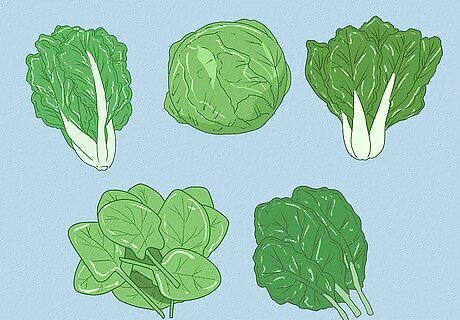
Incorporate vegetables. Start off with leafy greens such as lettuce and spinach. Eat these vegetables raw, and include the yogurt as dressing. Continue to eat fruit and drink juices as your body regulates its digestive system. After eating lettuce and spinach, move on to other vegetables. Eat them raw and cooked. You could even make vegetable soup (but don't eat the store bought soups, because they have a lot of added sugars and salts and things your body won't thank you for). Sprouts are also a highly effective vegetable, because they contain lots of minerals and antioxidants that your body needs and easily digests.

Add some grains and beans. You'll need to cook these well and eat them in addition to your veggies and your fruits. Your appetite will get stronger as you continue to re-introduce different foods into your diet. Try nuts and eggs once you've gotten more accustomed to eating (Day Four for the longer fast, Day Two for the one-day fast, and Day Three for the medium fasts). The easiest way to eat eggs is to soft-boil them or scramble them. Hard-boiled eggs are more difficult for your body to digest.
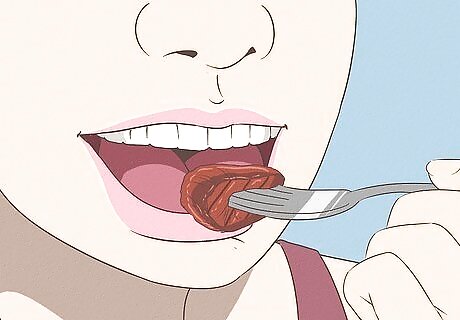
Make sure that your body is doing well before you introduce a whole bunch of things. If it's processing the veggies and fruits without problems (like cramping, nausea, etc.), then you can start eating the more difficult-to-digest foods. But if it's been a struggle up until now, stick with the foods that have caused you the least trouble so far. Trust the foods that have a good track record with your body.
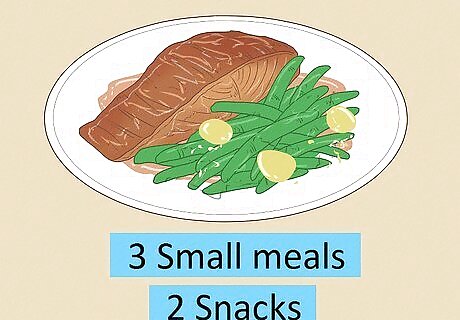
Eat small portions. You want to start off eating every two hours or so, in the beginning (after you've completed the 4 hour apart diluted juices). You'll be progressing towards larger meals, as your body adjusts to more food. In the end, the optimum daily eating schedule is 3 meals and 2 snacks. Once you've gotten to this point, your body should be back to normal and hopefully feeling better after the cleanse.
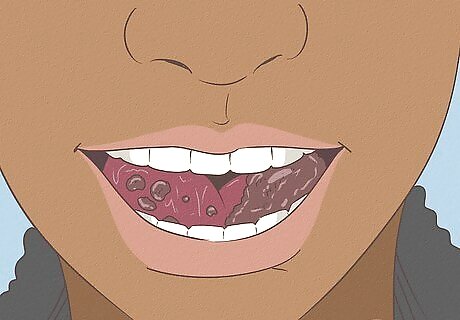
Chew food well. Chewing your food breaks it up so that it is more easily digested by your system. So eat slowly and allow your body to prepare itself for digestion. Aim to chew each bite of food at least 20 times before moving on to the next bite.
Troubleshooting Common Problems

Know that diarrhea and frequent evacuations are common after reintroduction of solids. On the first day, you stuck to watermelon juice and on the second day, you introduced grapes and pears. Then, immediately after eating only small portions of the grapes and pear, you get diarrhea and the solids pass right through you. Is something wrong? Fasters experience this quite frequently after they introduce solids back into their body. During the fast, your digestive system has been resting and inactive. The enzymes in your gut aren't used to working. Suddenly, they get whole food and have to ramp up from 0 to 60 in a short amount of time. No wonder they crash and burn. The solution to this problem is to stay the course. Most likely, the problem is not with the food itself but with the simple fact that you're asking your body to do something it isn't completely ready for. Stick predominantly with fruit and vegetable juices, along with broths and stocks, and occasionally give your body some easy solids. Your body should adjust within a day or two.
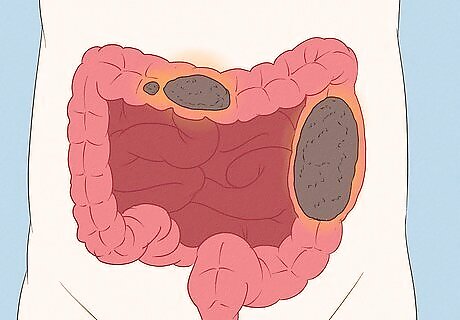
Know that gas and constipation is also relatively common. If, on the other side of the spectrum, you're unable to have a bowel movement after beginning to reintroduce solids into your diet, don't panic. You're not a fringe case, and you're not doing anything wrong. Here's what you do: Mix together 1 teaspoon of Metamucil (or other fiber supplement) and 1 teaspoon of aloe juice in 8 ounces of water and drink before meals. The fiber supplement and aloe vera are both gentle laxatives which should help you evacuate. Stay away from foods or drinks that cause constipation or make it even worse. Nuts, kale, and coffee, while raw and otherwise good for you, will make your constipation even worse. Stick with easy-to-digest fruits like prunes and vegetables like yams and squash.

Know that too much variety, especially when reintroducing solids, can cause digestive problems. The name of the game for breaking a fast is simplicity. Find a juice drink that works and stick with it for a day. The next day, find a simple fruit that works and only eat it for a day. Too many fasters assume that their digestion is hardier than it actually is and punish it by giving it what they think it wants — variety — when it really wants simplicity. Keep things simple and your body will reward you.
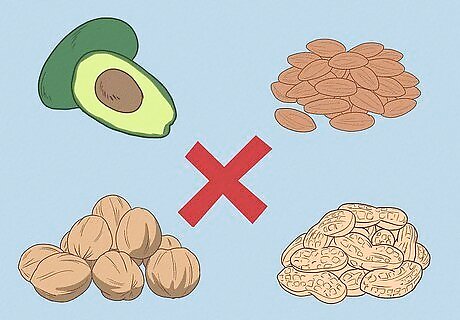
Beware of foods with a lot of oil during the first week of breaking the fast. Even foods with beneficial oils, such as avocado and nuts, may cause digestive problems for stomachs that have recently been weaned off solids. Stick to fruits and vegetables without a lot of oils in the early going; gently see how your responds to high-oil foods such as avocado when you are ready to reintroduce them.















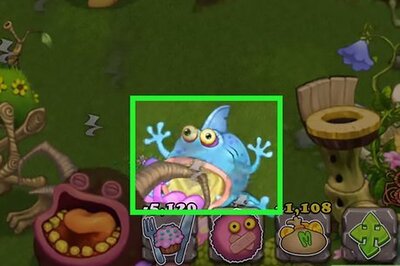
Comments
0 comment